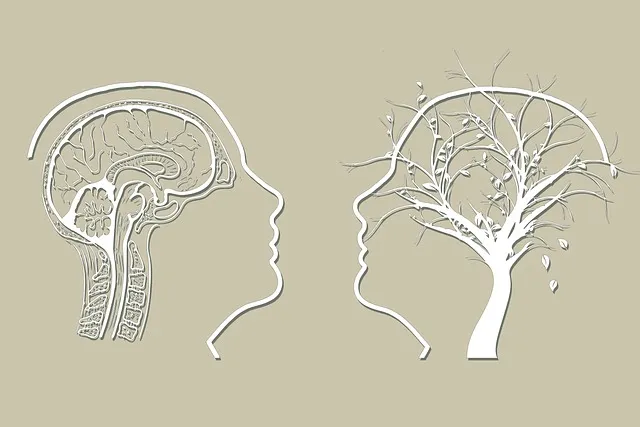Broomfield Kaiser Permanente mental health facility employs a rigorous, multifaceted evaluation method to assess the success of its programs. This approach combines quantitative data (surveys, numerical metrics) with qualitative insights from participant narratives, tracking changes in coping strategies, mood, and overall well-being. By utilizing standardized tools and even non-traditional initiatives like podcasts, the facility ensures tailored, culturally sensitive care while fostering trust and confidentiality through thoughtful survey design, aligning with Mental Health Awareness and stigma reduction goals.
“At Broomfield Kaiser Permanente, a comprehensive mental wellness program has been implemented, and its success hinges on effective evaluation methods. This article delves into the multifaceted approach used to assess the impact of the program, balancing quantitative metrics and qualitative insights. We explore how surveys and client feedback, coupled with in-depth interviews, provide a holistic understanding of the facility’s services. Furthermore, it highlights the practical steps taken to sustain and improve the program based on these evaluations, demonstrating a commitment to enhancing mental health care at Broomfield Kaiser Permanente.”
- Assessing Program Impact: Metrics and Surveys
- – Overview of quantitative evaluation methods
- – Developing and administering surveys for mental health programs at Broomfield Kaiser Permanente
Assessing Program Impact: Metrics and Surveys

Evaluating the impact of mental wellness programs is a multifaceted process that goes beyond simple satisfaction surveys. At the Broomfield Kaiser Permanente mental health facility, we employ a comprehensive approach to measure the effectiveness of our initiatives. One key component involves tracking participant outcomes using standardized metrics tailored to specific program goals. For instance, assessing resilience building interventions might include measuring changes in coping strategies and stress response over time. Similarly, mood management programs can utilize scales to gauge improvements in depressive or anxious symptoms.
Beyond quantitative measures, qualitative surveys offer valuable insights into participants’ experiences. These tools allow individuals to share personal stories of growth, challenges faced, and the perceived usefulness of various compassion cultivation practices. By combining these methods, Broomfield Kaiser Permanente aims to understand not only the immediate effects but also the long-term sustainability and impact of our mental wellness programs on individuals’ overall well-being.
– Overview of quantitative evaluation methods

Quantitative evaluation methods play a pivotal role in measuring the effectiveness and impact of mental wellness programs at institutions like the Broomfield Kaiser Permanente mental health facility. These approaches often involve numerical data, surveys, and statistical analyses to assess various aspects of program performance. For instance, tracking participant engagement, treatment outcomes, and satisfaction levels through structured questionnaires can provide valuable insights into the success of interventions. The data collected allows for evidence-based decision-making, enabling the facility’s leadership to identify areas that require improvement and optimize resources for better patient care.
At the Broomfield Kaiser Permanente mental health facility, a comprehensive evaluation strategy might include administering standardized tools such as the Risk Assessment for Mental Health Professionals to gauge client risks and tailor services accordingly. Additionally, assessing cultural sensitivity in mental healthcare practice through quantitative methods ensures that programs are inclusive and effective across diverse populations, aligning with the facility’s commitment to providing culturally competent care. Even the production of a Mental Wellness Podcast Series can be evaluated quantitatively by measuring listenership, engagement metrics, and audience demographics, thereby contributing to a holistic understanding of the facility’s mental wellness initiatives.
– Developing and administering surveys for mental health programs at Broomfield Kaiser Permanente

At Broomfield Kaiser Permanente mental health facility, evaluating program effectiveness is a multifaceted process that heavily relies on surveys to gather firsthand insights from participants. These surveys are meticulously designed to assess the impact and satisfaction levels associated with various mental wellness initiatives. By collecting quantitative and qualitative data through structured questionnaires, the facility aims to understand how its programs, such as Empathy Building Strategies, cater to the unique needs of individuals seeking support for their mental health.
The survey administration process involves a series of steps to ensure accuracy and reliability. Staff members play a crucial role in distributing and collecting these surveys, ensuring participant confidentiality and fostering an environment of trust. The Mental Health Awareness and Mental Illness Stigma Reduction Efforts are closely aligned with the survey design, as they seek to uncover perceptions and attitudes that can inform program enhancements. This data-driven approach allows Broomfield Kaiser Permanente to continuously improve its mental health services, ultimately contributing to better patient outcomes and enhanced overall wellness.
Evaluating the impact of mental wellness programs is essential for understanding their effectiveness, particularly within a setting like Broomfield Kaiser Permanente’s mental health facility. By combining quantitative methods with survey administration, we can gain valuable insights into program outcomes and participant experiences. This approach allows for data-driven decisions, ensuring that resources are allocated efficiently to support the well-being of individuals seeking care at Broomfield Kaiser Permanente. Through continuous evaluation, the facility can enhance its services, cater to diverse needs, and ultimately foster a healthier community.






